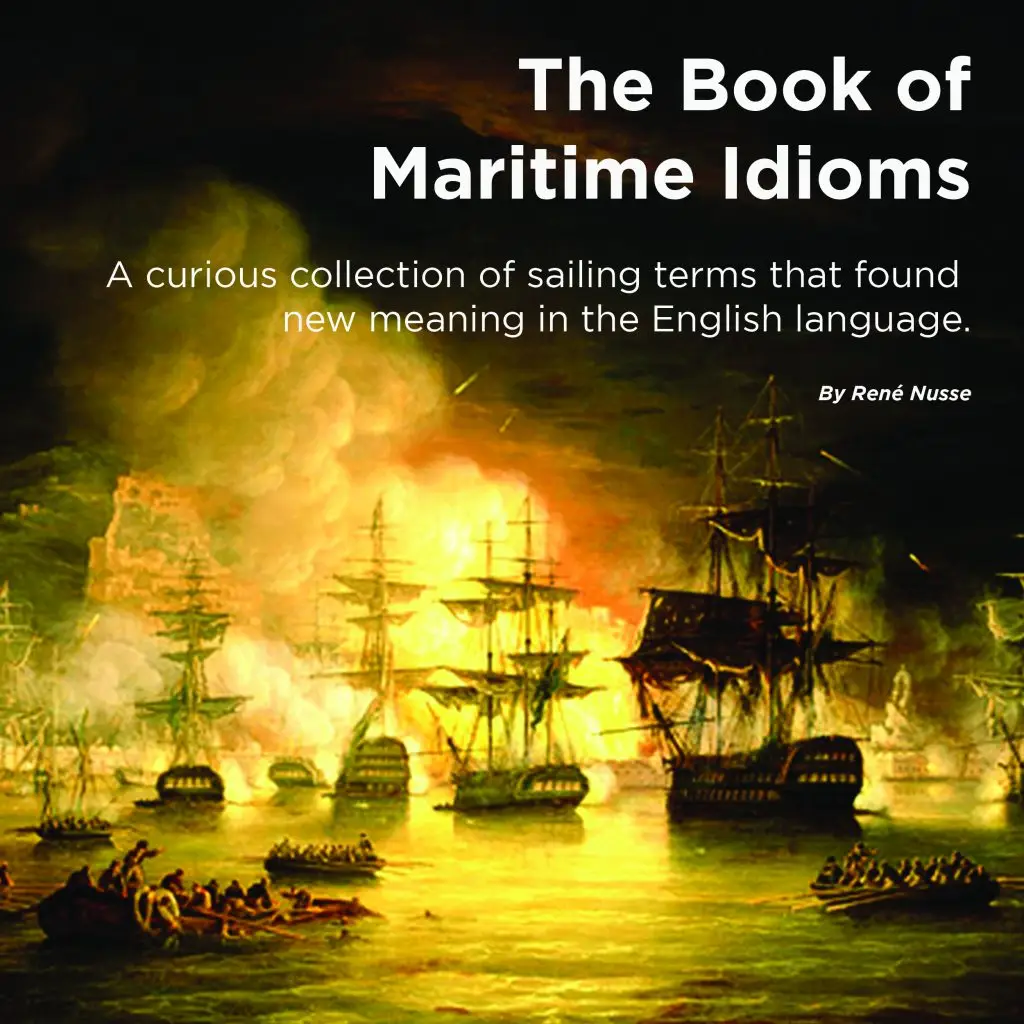Let’s look at what the rule says:
ON OPPOSITE TACKS
When boats are on opposite tacks, a port-tack boat shall keep clear of a starboard-tack boat.
Tack in this context is the relationship between your boat and the direction of the wind. In general, a starboard tack is when the wind is coming from the starboard side of your boat, while a port tack is when the wind is coming from the port side of the vessel.
Another way to remember is to simply look where you sit. In racing, we normally sit on the high (windward) side of the boat. So in general, if we sit on the starboard side, there is a good chance that we are on a starboard tack.
But tack is defined in the definitions within the rules which states:
Tack, Starboard or Port A boat is on the tack, starboard or port, corresponding to her windward side.
The rules also define the windward side as follows:
Windward See Leeward and Windward.
Leeward and Windward A boat’s leeward side is the side that is or, when she is head to wind, was away from the wind. However, when sailing by the lee or directly downwind, her leeward side is the side on which her mainsail lies. The other side is her windward side. When two boats on the same tack overlap, the one on the leeward side of the other is the leeward boat. The other is the windward boat.
The definition is a bit convoluted as it defines the leeward side from which you then can deduct the windward side. So rather than chasing our tail with rules and definitions, let’s look at some examples.
The wind is coming directly from the north so yellow is getting the wind over her starboard (windward) side. She is therefore on a starboard tack.
Blue is the opposite. Its leeward side is starboard so the windward side is on port. Ie, she is on a port tack.
With yellow on a starboard tack and blue on a port tack we can determine that the port-tack boat (BLUE) shall keep clear of a starboard-tack boat (YELLOW).
Let’s follow this example by having a look at what “keeping clear” means within the definitions of the rules:
Keep Clear A boat keeps clear of a right-of-way boat
(a) if the right-of-way boat can sail her course with no need to take avoiding action and,
(b) when the boats are overlapped, if the right-of-way boat can also change course in both directions without immediately making contact.
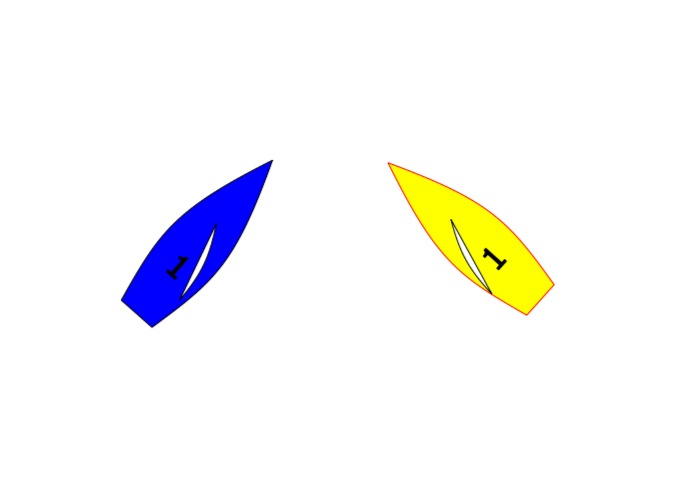
Two boats at opposite tack
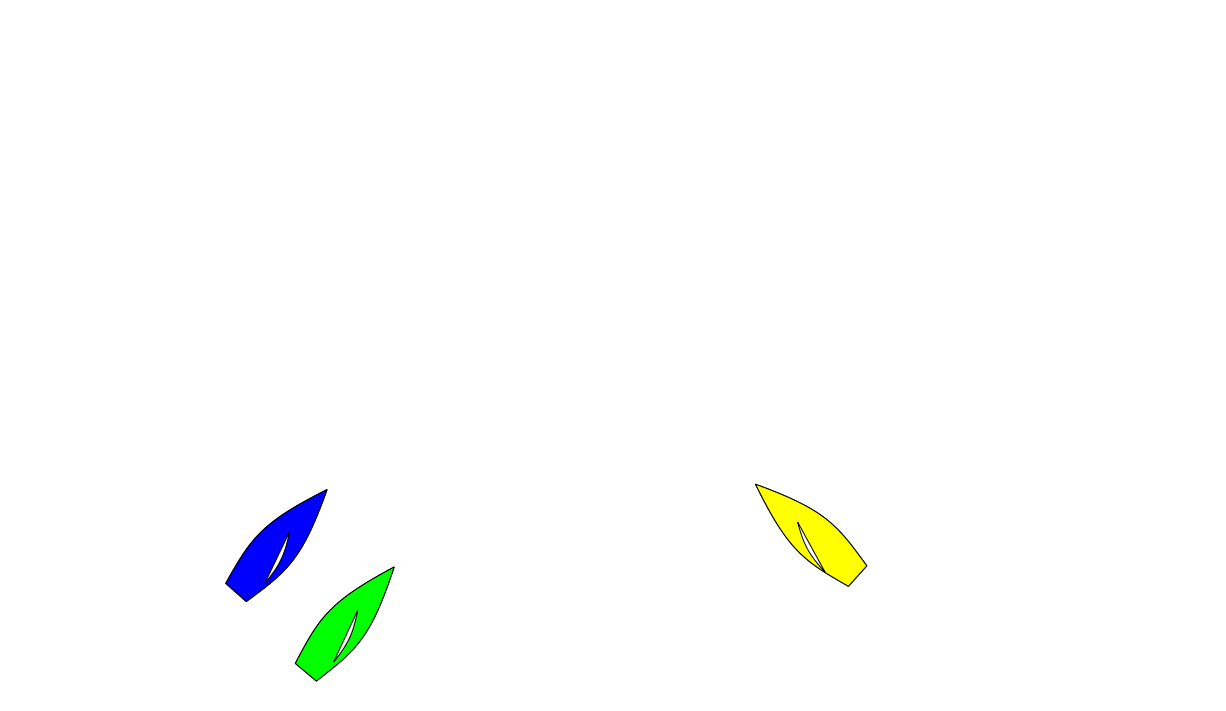
Keeping clear
In example 2, blue and green are on a port tack and yellow is on a starboard tack. Therefore blue and green have to keep clear of yellow.
The two most likely ways to do this is by tucking under yellow as green does or tacking as blue is doing. Both green and blue comply with Rule 10.
So what if the wind is coming directly from behind? The leeward/windward definition doesn’t hold true.
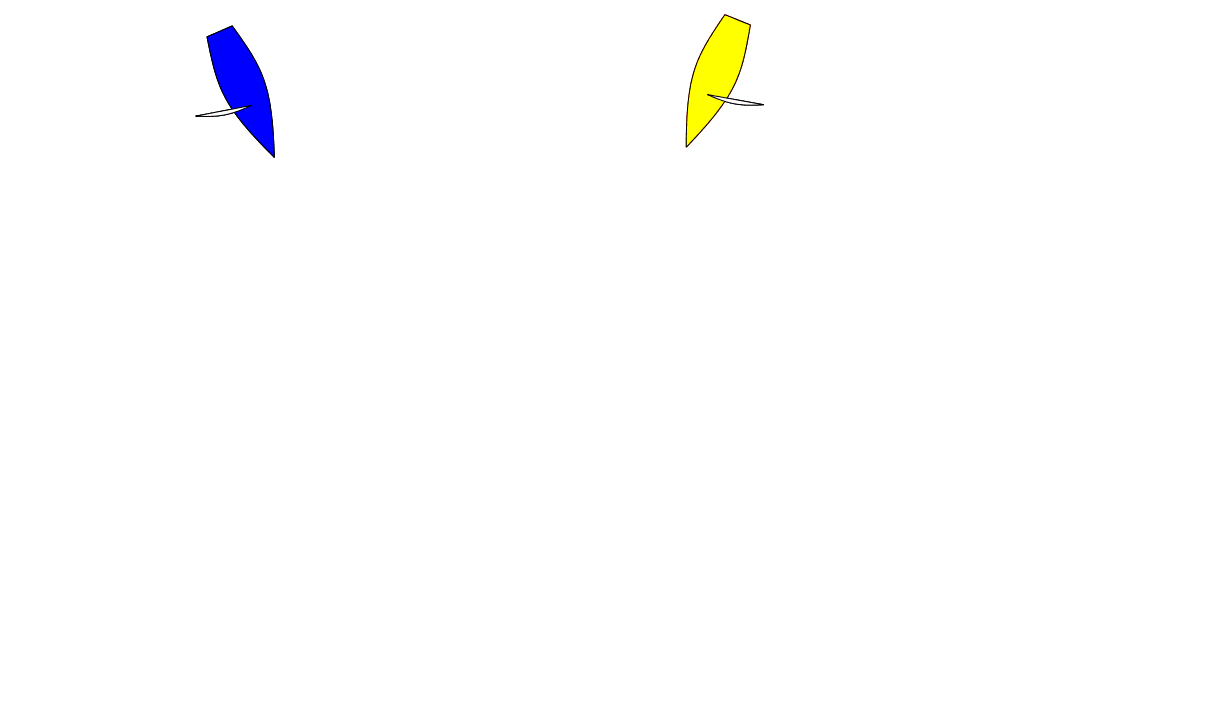
Sailing downwind
The second part of the definition of windward clarifies this by stating “…However, when sailing by the lee or directly downwind, her leeward side is the side on which her mainsail lies…” So in example 3, yellow is on a starboard tack and blue should keep clear.
Contrast this with example 4, where yellow is slowly overtaking blue and eventually the booms touch without causing injury or damage.
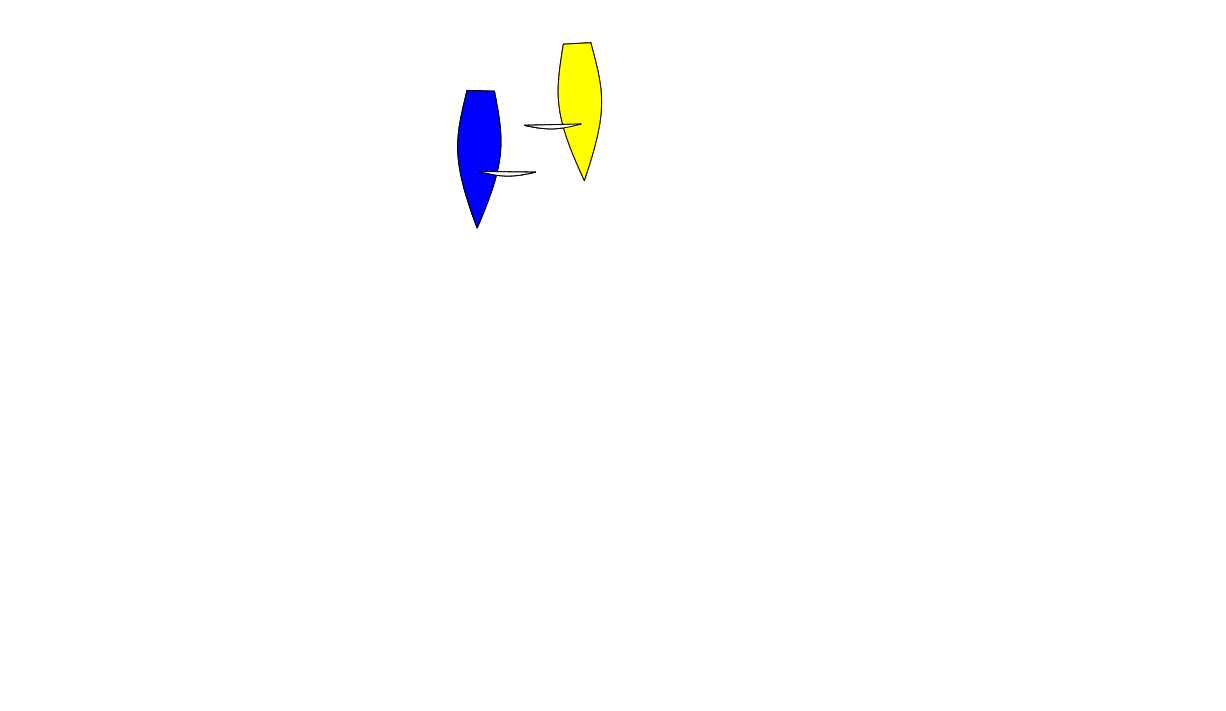
Sailing downwind
Because both boats are sailing downwind by the lee, their tack is determined by the opposite side of where her mainsail is deployed.
So in the above example, yellow breaks Rule 10 whereas blue breaks Rule 14 (Avoiding Contact) but will be exonerated under Rule 43.1(3) as there is no damage or injury.
Don’t get this scenario confused with Rule 11 (on the same tack – overlapped). Although the wind is the same for both boats, it is the sail’s position that determines the tack…

Who is breaking what rule?
Blue is in the wrong!
Scenario 2
Below, you find four boats trying to round the far marks through a gate-mark. Just applying Rule 10 (we cover the others later), which boats need to keep clear?
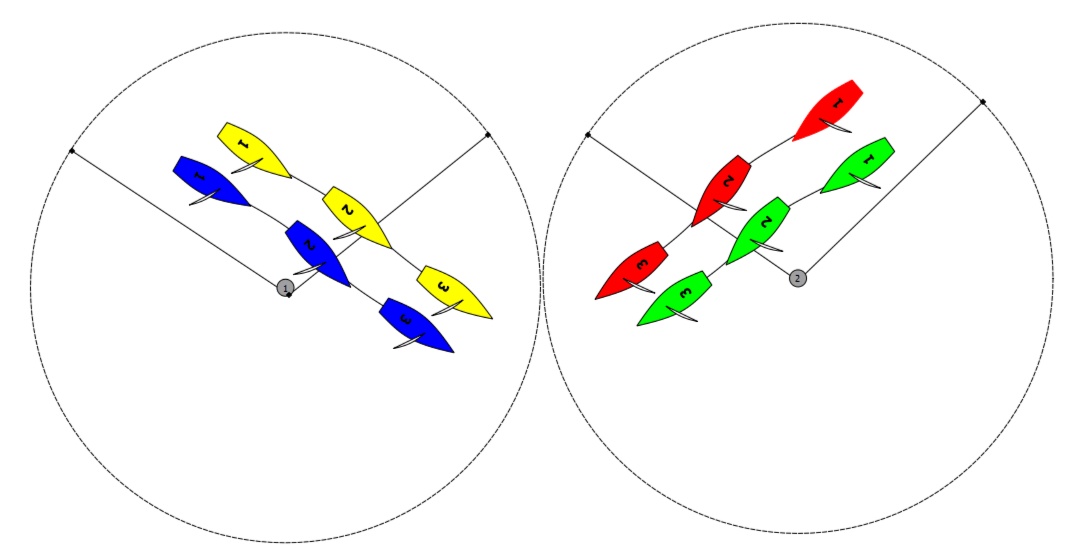
Keep clear boat(s)?
Blue didn't keep clear!
Scenario 3
In the scenario below, blue is on starboard and yellow is on port. This scenario looks at the definition of “keep clear”.
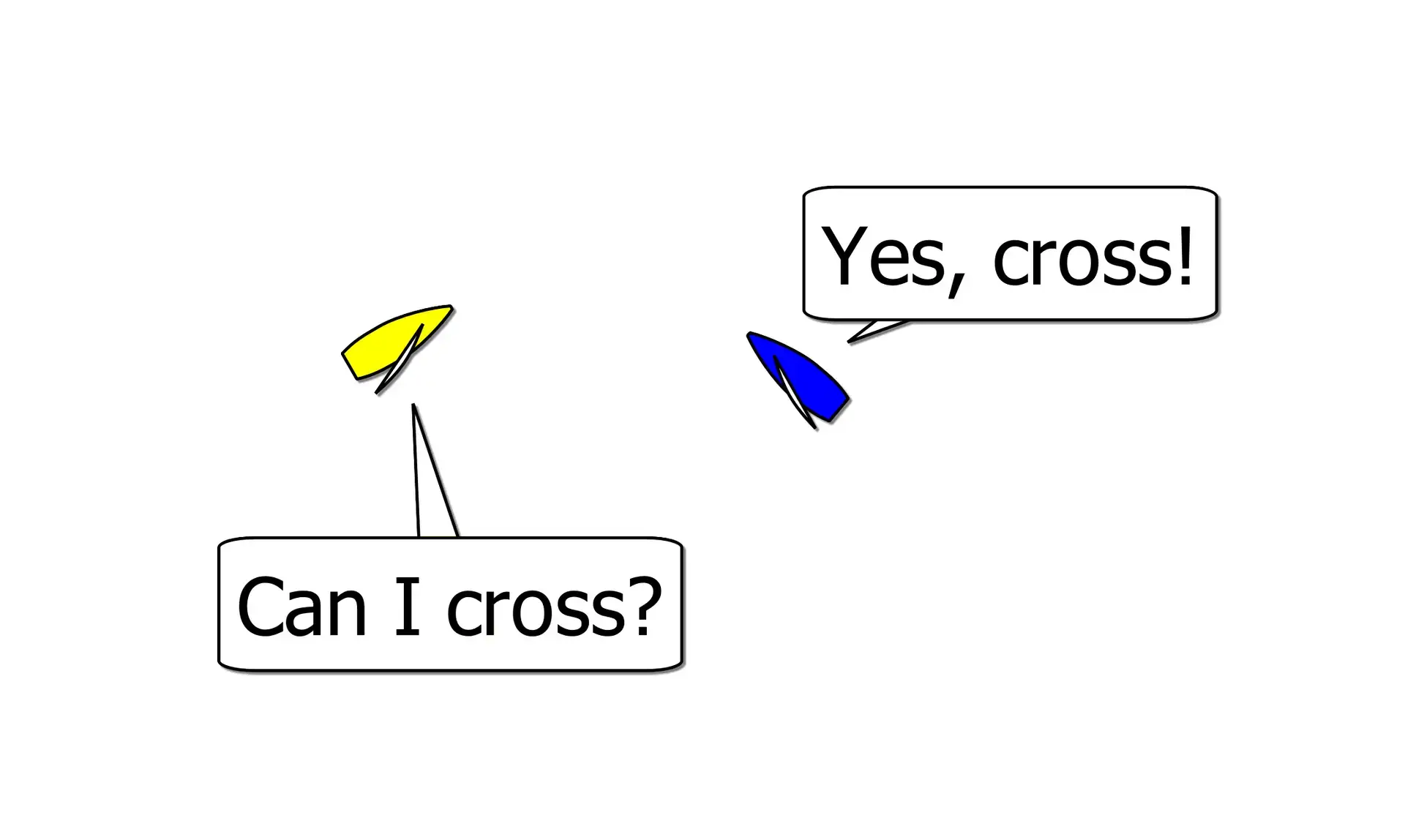
Does the yellow boat break Rule 10?
NO, yellow doesn't break Rule 10
Whatever the reasoning, blue determines her own course. For example, she may not want to become the windward boat after yellow tacks.
Scenario 4
Blue is the starboard boat. Yellow, on a port tack tacks in front of blue after which blue is clear astern.
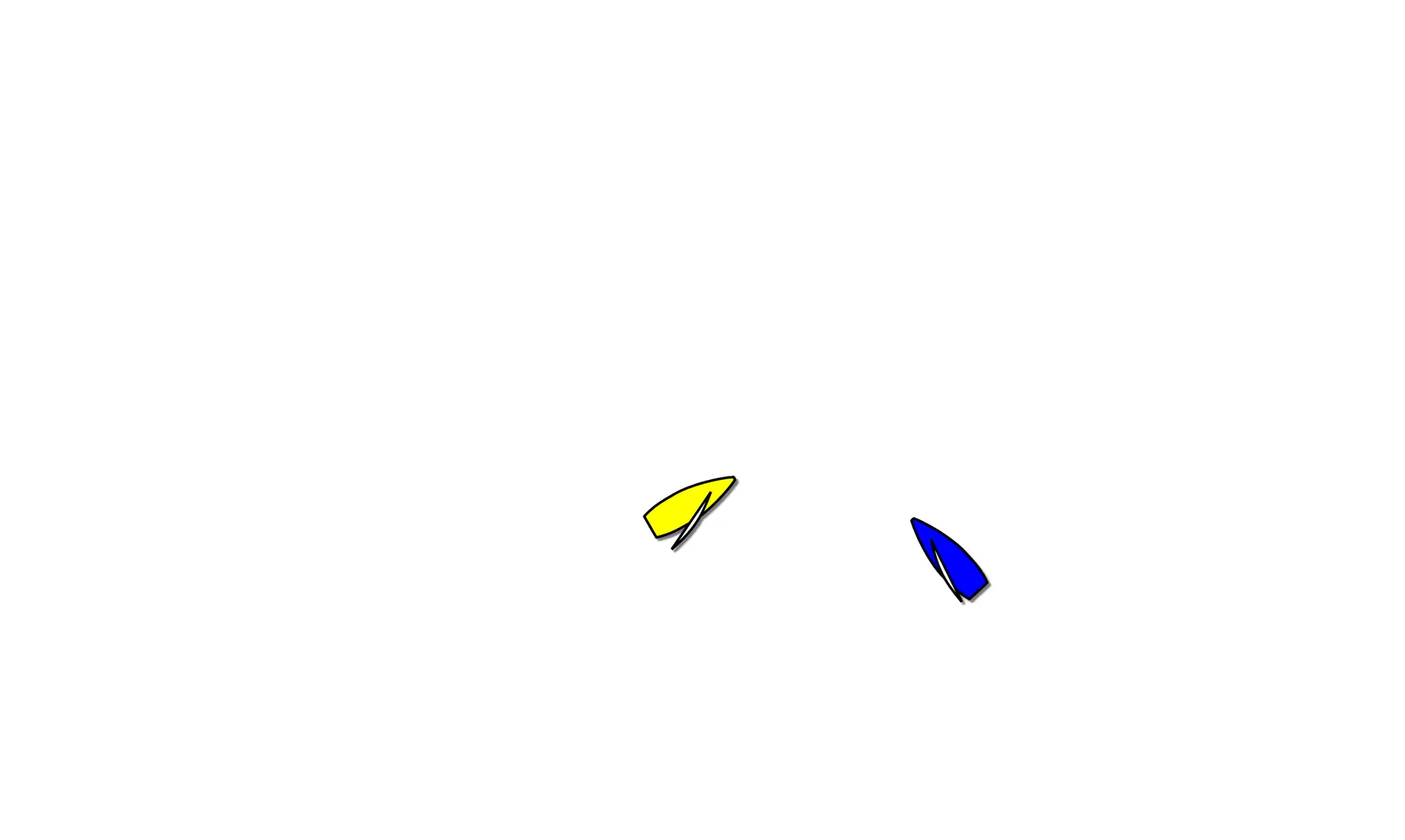
Does the yellow boat break Rule 10?
NO, yellow doesn't break Rule 10
Rule 12 applies because both boats are now on the same tack and there is no overlap. In this scenario, blue becomes the boat clear astern and therefore needs to keep clear of yellow...
So to sum up Rule 10…
- Extremely common “must-know” rule.
- It applies to boats on opposite tacks (port/starboard).
- A boat is on the tack, starboard or port, corresponding to her windward side.
- On a downwind run a boat’s windward side is the opposite side to which her mainsail lies.
- When you are racing, always ask yourself which tack your boat is on even when no other boats are near. Then when the need arises, you only have to determine the other boat’s tack to make an informed decision.
Author
-

Rene is a keelboat instructor and sailing coach in the Mandurah area WA. He is also the author of several books about sailing including "The Book of Maritime Idioms" and "Renaming your boat".
View all posts


